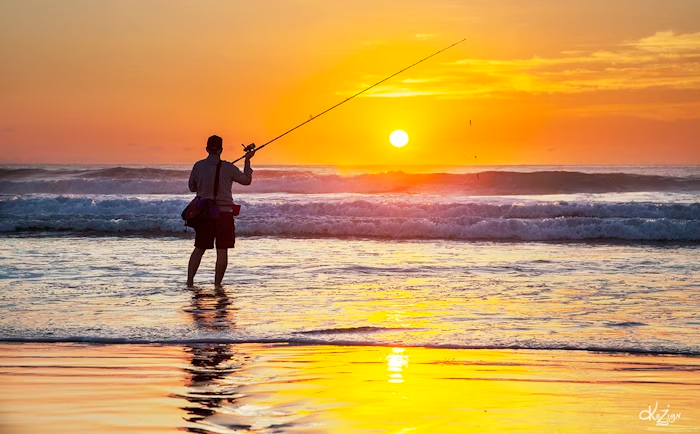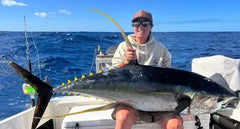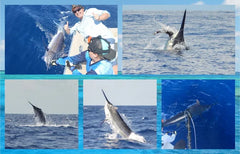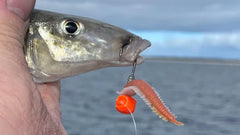Beach Fishing 101
by Bob Thornton, Tackle World Lawnton

Australia’s National Pastime
In a country like Australia that is surrounded by beautiful beaches, it’s no surprise that beach fishing is very popular. Anglers from all around our island nation jump at any opportunity to wet a line in the surf and tangle with iconic species. Popular though it may be, there are still so many beaches that don’t receive a lot of traffic, and finding a stretch of sand to have to yourself for a few hours isn’t hard to do.
There really isn’t a much more peaceful scene than casting a line into the waves as the sun peaks or sets over the horizon while white foam washes around your bare feet. There’s something about beach fishing that’s so primal and calming, and it’s no wonder that some anglers choose to only fish off the beach.

Beach Fishing Gear
Your essentials on the beach are very straightforward. You’ll need a rod and reel, somewhere to keep spare terminals and/or lures, and somewhere to keep your bait if you’re bait fishing. A rod tube or spike can also be handy to free your hands for other tasks while keeping your reel out of the sand.
In most beach fishing scenarios, anglers are chasing bread-and-butter species such as swallowtail dart, sand whiting, yellowfin bream, flathead, Australian herring, tailor, and Australian salmon. Long and whippy 10-12ft rods with a 3-6kg line rating are ideal for light surf fishing for bream, whiting, dart, and small tailor and salmon.
Beach fishing reels are usually of the spin or side-cast variety, and both reel styles can be rigged comfortably on a spin rod. For side-cast reels, Alvey is the top brand known for durability and ease of use in surf fishing conditions.

Alvey reels are Australian through and through, with over 100 years of satisfied customers. Direct wind side-cast reels like these allow anglers to stay in direct contact with their rig, which is invaluable when fishing in a turbulent environment where bites can easily be missed.
Spin reels are also useful for surf fishing, especially if you prefer something versatile for lure fishing. Any 3000-4000 size reel with a light line, like a 3-6kg mono, is perfect. Using a rod tube or spike will keep the reel safe from sand.

Rigging Up for the Beach
Rigs for the surf don’t have to be complicated, especially if you’re targeting smaller species like bream, whiting, dart, and flathead. A simple sliding sinker rig or paternoster rig will work perfectly. For baits, small, long-shanked hooks ranging from no. 6 to 1/0 are ideal.
Using fluorocarbon trace of about 6-10lb is recommended for stealth. Pre-made surf rigs are available too, making it easy for beginners to get started.

Reading the Beach
Finding suitable fishing spots on a beach can be challenging. Look for slightly deeper water close to shore, surrounded by sandbanks. These areas, known as ‘beach gutters,’ act as hunting grounds for foraging species.
Gutters can sometimes form right at your feet, so don’t be afraid to cast close to shore. If you’re not getting bites, move to a different gutter until you find an active spot.

Feeling Beachy?
Beach fishing offers many opportunities, from targeting common species to exploring advanced techniques. It's a relaxing and rewarding pastime, and the simplicity of the setup makes it ideal for all ages.
Good luck on your beach fishing adventures, and remember to clean your gear after each session for longevity!

 Select Store
Select Store








